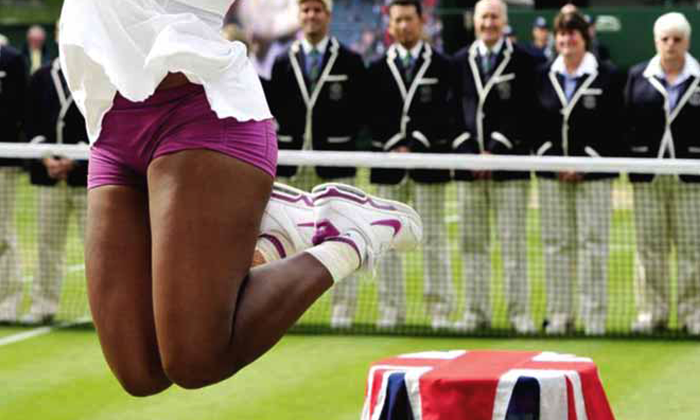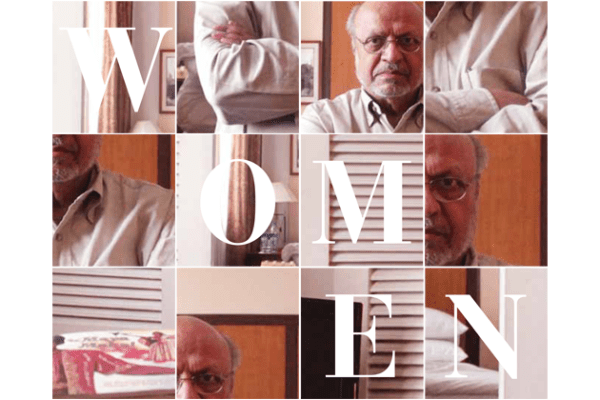“One wants to mutter deeply that apart from having two good legs I also have two good degrees and it is justpossible that I do know what I’m talking about” – Edwina Currie
Cultivating a recently acquired habit, every Sunday morning, I spend hours watching budding hockey players, footballers, cricketers and track and field athletes practise and hone their skills at the Jadavpur University training grounds in Salt Lake, Kolkata. Some represent the university teams, some just come to play. Over the last few weekends, I have been noticing a young girl. She runs her heart out. While the grown up boys sneak out from the warm-up laps after 3-4 rounds, her batteries never run out. And Shikha’s shoes aren’t really helping her cause, the sole’s coming off. One Sunday, I foolishly asked her, “Tumi kon khela te achho (Which sport are you into)?” She completes the lap and replies without much interest, “Dekhe bojha jachchena (Isn’t it evident)?” I ask her again, “Tomar inspiration ke (Who’s your inspiration)?” This time, she takes off for more than a lap. And I get my answer.
Legs amputated at the age of 1, record setting runner, softball star, first double-amputee to compete against ablebodied athletes, Aimee Mullins could easily be regarded as an inspiration. And yes, she has been able to change the public perception towards prosthetics, but more so for being an Alexander McQueen muse, and an L’Oréal Paris spokeswoman. Not many remember that Aimee was also one of the foremost torchbearers of the Paralympic Games. Not much has been documented about her athletic career – a meagre two liner on Wikipedia and that’s almost it.
Though I’d like to believe that Mullins is all about athletics, she believes otherwise, “I had a great [L’Oréal Paris] Colour Caresse in bright pink, because I knew that once the mud got on me, the only thing visible on me were pink lips. There was something empowering about that moment.” Empowering beauty of the lip balm over the prosthetic legs which gave her a new life and inspired a generation, legs which bore the burden of a thousand expectations, really? “Yes, I can’t tell you how many emails, Tweets I get, asking what my manicure is going to be [when I race], it’s liberating for all of us to realize that we can define for ourselves what beauty means — and what powerful looks and feels like.”
“Over the past three decades, sports-media scholars from around the world have amassed enough observed evidence to conclude that female athletes are significantly more likely to be portrayed in ways that emphasise their femininity and heterosexuality, rather than sporting prowess.”
In the recently concluded 2012 Paralympic games, Aimee led the US team’s lap around the stadium during the opening ceremony. For the occasion, she got herself a customised set of prosthetic legs which had golden wings embossed on them. “They’re pretty awesome,” Mullins says. “The motto [of the Olympics] is ‘Higher, Faster, Stronger,’ so the wings kind of felt like very much a representation of that.”
Athletes (irrespective of their gender) dedicate their heart, soul and their bodies to their sport from a very tender age. They train, they run those legs sore, battling pain, and unconstrained by the fright of failure to reach the epitome of sporting glory. But why does the definition of that glory change into nude magazine covers when the athlete, in question, is a female?
In 2010, the notorious Sports Illustrated (notorious for their lack of coverage of women’s sports) devoted a cover to champion Alpine skier, Lindsey Vonn. SI’s cover, however, portrayed the champion skier as nothing, but a sex object. She posed for the photograph, wearing a ski regalia, her backside arched at a 45degree angle, while a superimposed sharp mountain peak stood tall between her legs. Inside, the cover essay read, “No one rides the mountains like her,” to mark her third consecutive world championship.
In 2011, the first female NBA scout, Bonnie-Jill Laflin posed nude for a PETA ad. The copy was, “WANT MY BODY? Go Vegetarian!” I guess PETA has never featured a naked NBA male scout. They are pretty fit too.
Over the past three decades, sports-media scholars from around the world have amassed enough observed evidence to conclude that female athletes are significantly more likely to be portrayed in ways that emphasise their femininity and heterosexuality, rather than sporting prowess. Study after study has revealed that newspaper and TV coverage systematically focus on hypersexualised images of female atheletes’ body parts.
On October 21, 2010, a Mandarin daily, Kwong Wah Yit Poh, in Page A32, reported about the women’s synchronized swimming competition during the then ongoing 16th Asian Games with a full page photo spread. Along with the photos went lurid captions, which translated read, “legs spread so widely, have they not thought about the underage audience?”, “angels submerged in water, exposing their attractive figures”, “the angels possess beautiful legs that make you unable to restrain yourself from touching them”, “gets you hooked with their stretched legs”, and “water ballet resembles a bevy of beauties in the bath”. I fail to figure how you can call that a report on the competition, but can easily make out how you can strip down a competitive sport to just a titillating display of body parts.
A common visual technique utilized in music videos, movies and advertising, is the use of women’s legs as framing devices for a scene or shot. The Women’s Tennis Association (WTA) had recently been running a campaign ‘Strong is Beautiful’ to establish a deeper engagement with fans from around the world. The campaign which featured mostly ladies from the top fleet had a video with Victoria Azarenka. One of the primary features of Azarenka’s game is to run down her opponents. Her court coverage gives her a Nadalian feature which wears down the opponent. Coming back to the video (sorry for the distraction), it starts with the camera focusing on her legs and very slowly moving up to her crotch, pausing slightly as she prepares to hit a strong forehand. Along with the visual goes her voiceover, “I like to hit the ball hard,” the camera moves up slowly, “Crush it,” the camera moves further up to her breasts as she says, “And if the ball comes back, it’s trying to say something to me.” The camera pauses as Victoria hits a crushing forehand in ultra slow motion, her body, which has been well oiled for the commercial, ripples as the ball hits the racquet and she replies to the ball, “How about a little harder?” Then comes the text on a black screen, “S T R O N G IS B E A U T I F U L”. Indeed.
Every story has many protagonists whose struggles are their own. While some female athletes have no other option, but to sell their bodies (whether their skills fall short or not) to share the spotlight with their male counterparts in this sexist society, others bear the brunt in some other way, in some other section of the society. They form small groups, have their brothers keep a watch on them, keep running, bare feet, on stone and gravel, on grounds where sometimes their brothers are executed. Surrounded by the darkness of societal oppression, the only hint of light they receive is probably through the eye-hole in their burqas. During the 2012 London Games, when Sarah Attar and Wodjan Ali Seraj Abdulrahim Shahrkhan represented the women of Saudi Arabia on the world’s grandest sporting spectacle, they grabbed headlines and that was it. “It is unlikely that the Saudi government or the Saudi sporting authorities of their own volition will make changes inside the country as a result of sending two women to the Olympics” points out Christoph Wilcke, a Saudi researcher at Human Rights Watch.
Female athletes, for the first time in 2012 London Games, outnumbered their male counterparts in USA team. In the initial days, they even outmedaled them. Saudi Arabia sent two women for the first time in history. Then why are women still battling to get counted seriously in sports? Why did the female boxers need to fight against the authorities’ diktat on athletes to wear skirts in the ring? Why must beach volleyball players wear tiny bikinis? There is no study, no logic which proves that boxers punch and move better when wearing skirts, there is no research that states bikinis to be the ideal outfit for volleyball players. If authorities feel such outfits and such portrayal of women’s sports increases viewership and enrich the engagement of the audience, then these talented athletes are actually competing against pornstars. And for that matter, it’s tough competition because most men have free access to a lot of porn on the internet.
Outbursts against sexualisation of female athletes stress on a perceived notion that ‘Sex Sells’. But whose sex is sold? And to who? If it was simply that sex sold, we’d see men and women equally sexually objectified in popular sports culture. Instead, we see, primarily, women sold to (presumably heterosexual) men. So what are we selling, exactly, if not “sex”? Aren’t we selling men’s sexual subjectivity and women as a sex object? The idea that men’s desires are centrally important and meaningful, and womens’ are not?
But do men really watch women’s sports to get turned on by the athlete’s body parts? How many of us would stare at Saina Nehwal’s legs as she shifts like a butterfly between the ad court and the deuce court? And then again, how many of us have searched for the keywords “Sania Mirza hot” in Google images?
Today is another one of my Sunday mornings at the training ground. I watch Shikha very inquisitively without interrupting her. She seems a little tired by the end of the 5th lap, her legs were giving up, but her coach doesn’t let her stop. She glances towards me a couple of times, and finally at the end of her 8th lap, she comes to me and says, “Ami ekhono bhabchhi kake nijer role model banayi (I am still wondering who should be my role model?)?” I hesitantly ask her, “Ami tomake practice korte dekhi, taate tomar osbidhe nei toh? (I hope you don’t mind me watching you practice)”. She drinks a half a bottle of water, clears her dry throat, and answers, “Osubidha thaklei ba ki korbo? Tumi toh eka nayo (What can I do even if I have a problem? You are not the only one.)”


